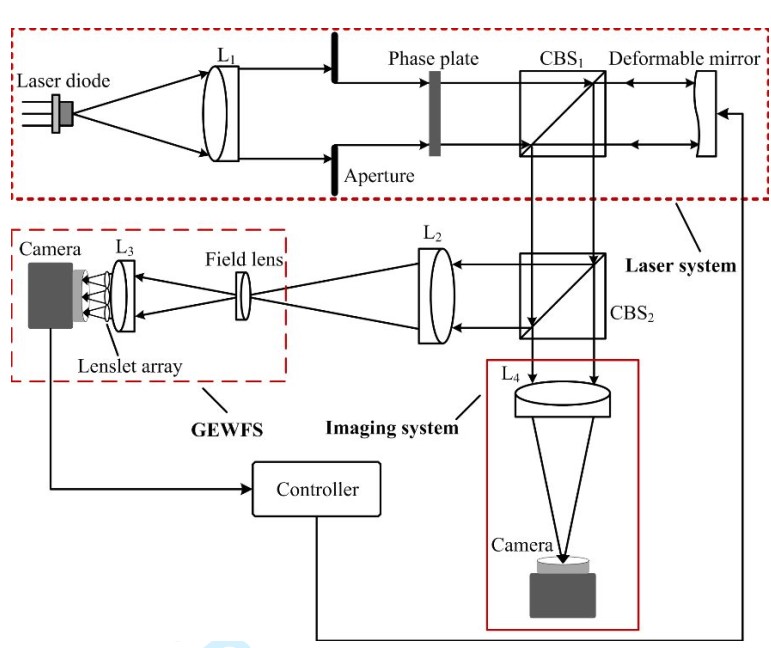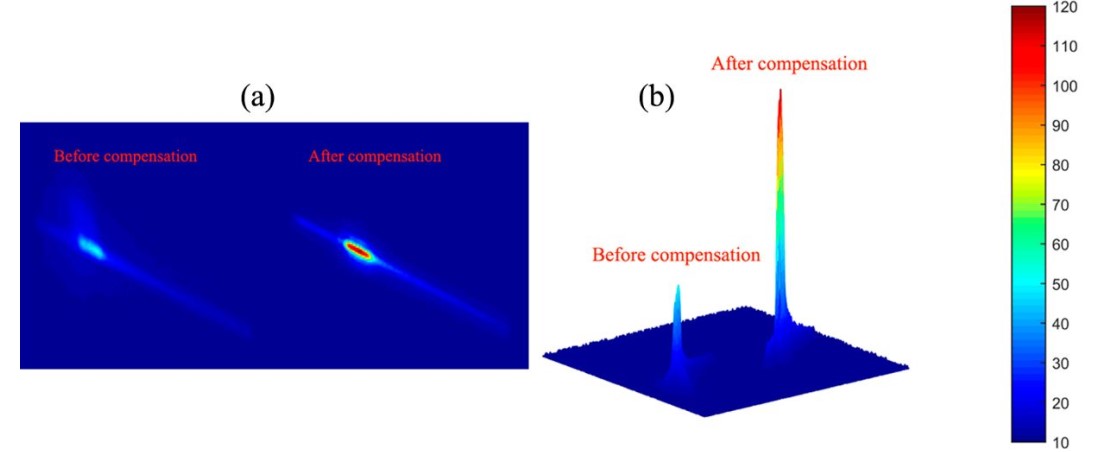Wavefront sensing from extended scenes is the main impediment for the applications of adaptive optics in many fields. For adaptive optics, the widely used wavefront sensors all work dependent on point sources, and cannot be used in the case of extended scenes. However, in most cases, the objects to be observed are all extended-objects, not point sources. This leads to adaptive optics is very difficult to be used in the overwhelming majority of imaging cases. To solve this problem, the research team, led by Prof. Zhang Sijiong, from Nanjing Institute of Astronomical Optics and Technology, National Astronomical Observatory of the Chinese Academy of Sciences, firstly proposed a General Extended Object Wavefront Sensor (GEWFS) with good versatility and high accuracy (Changwei Li et. al, Optical Engineering, 60, 073107, 2021) in July, 2021. The proposed sensor, GEWFS, successfully solves the problem of wavefront sensing from extended scenes in adaptive optics.In view of the pioneering work of the GEWFS proposed by Prof. Zhang’s group, the Editor-in-chief of the AIAA Journal (published by American Institute of Aeronautics and Astronautics), Prof. Tom I-P. Shih, gave Prof. Zhang a special invitation to present the application of the GEWFS in adaptive optics in September 2021. At Prof. Shih’s special invitation, the group published the work, application of the general extended-object wavefront sensor into aberration correction of lasers, in the journal of AIAA Journal in November 2022. In this work, the GEWFS is successfully used in adaptive optics to compensate aberration of transverse multimode lasers. The Strehl ratio of the compensated system is 0.90 after compensated by adaptive optics using the GEWFS, which is close to aberration free optical system. And the work was published in the journal of AIAA Journal owned by American Institute of Aeronautics and Astronautics (Changwei Li et.al, AIAAJ, 60, 11, pp: 6076-6081, 2022).
As introduced by associate professor Changwei Li, the first author of this paper, transverse multimode lasers belong to extended sources, not point ones, and adaptive optics cannot directly used to correct aberrations of beams from them because widely used wavefront sensors are depend on point sources. However, the GEWFS can work with extended sources, and can be directly used in adaptive optics to compensate aberrations of beams from transverse multimode lasers. The configuration of adaptive optics based on the GEWFS is shown in Fig. 1. Figure 2 shows the two- and three-dimensional intensity distributions of the laser beam before and after compensation by the system shown in Fig. 1. Figure 3 are the cross sections of the three-dimensional intensity distributions before and after compensation by the system shown in Fig. 1.

Fig. 1 Configuration of adaptive optics based on the GEWFS.

Fig. 2 Two- and three-dimensional intensity distributions of the laser beam before and after compensation

Fig. 3 Cross sections of the three-dimensional intensity distributions before and after compensation
At present, this team is working on promoting the GEWFS and adaptive optics based on the GEWFS in various areas, such as solar adaptive optics in astronomy, phase imaging in plant cytology.
This work was supported by the grants of the National Natural Science Foundation of China (Grant No. 11873069), Youth Innovation Promotion Association, CAS and the Operation, Maintenance, and Upgrading Fund for Astronomical Telescopes and Facility Instruments, budgeted from the Ministry of Finance of China (MOF), and administrated by the Chinese Academy of Sciences (CAS).